Engineering, Mechanical and Dynamic Properties of Basalt Fiber Reinforced Concrete
Abstract
1. Introduction
1.1. The Mechanical Properties of Basalt Fiber Reinforced Concrete
1.2. The Mechanical Properties of Basalt Fiber Reinforced Concrete
1.3. Dynamic Properties of Concrete Properties
2. Materials and Methods
2.1. Material
2.2. Concrete Mixes
2.3. Experimental Setup
3. Results and Discussion
3.1. Fresh Concrete Workability
3.2. Mechanical Property Test
3.2.1. Compression Test
3.2.2. Flexural Performance
3.3. Modal Testing
3.3.1. Damping Ratio
3.3.2. Dynamic MOE (Modulus of Elasticity)
4. Conclusions
- The addition of basalt reduces the workability of concrete significantly
- The compressive strength of basalt fiber concrete does not increase with the addition of fiber, and the suggested fiber content is 0.25%
- The flexural strength increases sharply with the addition of basalt fiber when keeping the fiber content lower than 0.5%
- The MOE of basalt fiber concrete is affected by the compressive strength, and there is no significant impact on the damping ratio of concrete with the addition of basalt fiber.
Author Contributions
Funding
Institutional Review Board Statement
Informed Consent Statement
Data Availability Statement
Acknowledgments
Conflicts of Interest
References
- Romualdi, J.P.; Batson, G.B. Mechanics of Crack Arrest in Concrete. J. Eng. Mech. Div. 1963, 89, 147–168. [Google Scholar] [CrossRef]
- Romualdi, J.P.; Mandel, J.A. Tensile Strength of Concrete Affected by Uniformly Distributed and Closely Spaced Short Lengths of Wire Reinforcement. JP 1964, 61, 657–672. [Google Scholar] [CrossRef]
- Kabay, N. Abrasion Resistance and Fracture Energy of Concretes with Basalt Fiber. Constr. Build. Mater. 2014, 50, 95–101. [Google Scholar] [CrossRef]
- Ramadevi, D.K. Experimental study on strength properties of concrete with different aspect ratios of basalt. Int. J. Civ. Eng. Technol. 2017, 8, 629–637. [Google Scholar]
- Alberti, M.G.; Enfedaque, A.; Gálvez, J.C. Fracture Mechanics of Polyolefin Fibre Reinforced Concrete: Study of the Influence of the Concrete Properties, Casting Procedures, the Fibre Length and Specimen Size. Eng. Fract. Mech. 2016, 154, 225–244. [Google Scholar] [CrossRef]
- Memon, I.A.; Jhatial, A.A.; Sohu, S.; Lakhiar, M.T.; Khaskheli, Z.H. Influence of Fibre Length on the Behaviour of Polypropylene Fibre Reinforced Cement Concrete. Civ. Eng. J. 2018, 4, 2124–2131. [Google Scholar] [CrossRef]
- Hu, X.; Guo, Y.; Lv, J.; Mao, J. The Mechanical Properties and Chloride Resistance of Concrete Reinforced with Hybrid Polypropylene and Basalt Fibres. Materials 2019, 12, 2371. [Google Scholar] [CrossRef]
- de Sousa Menezes, M.; Queiroz, E.C.; Soares, P.V.; Faria-e-Silva, A.L.; Soares, C.J.; Martins, L.R.M. Fiber Post Etching with Hydrogen Peroxide: Effect of Concentration and Application Time. J. Endod. 2011, 37, 398–402. [Google Scholar] [CrossRef]
- Gondokusumo, G.S.; Venkateshwaran, A.; Tan, K.H.; Liew, J.Y.R. Unified Equations to Predict Residual Flexural Tensile Strength of Lightweight Steel Fiber-Reinforced Concrete. Struct. Concr. 2021, 22, 2202–2222. [Google Scholar] [CrossRef]
- Borhan, T.M. Properties of Glass Concrete Reinforced with Short Basalt Fibre. Mater. Des. 2012, 42, 265–271. [Google Scholar] [CrossRef]
- Yang, Y.; Wu, C.; Liu, Z.; Wang, H.; Ren, Q. Mechanical Anisotropy of Ultra-High Performance Fibre-Reinforced Concrete for 3D Printing. Cem. Concr. Compos. 2022, 125, 104310. [Google Scholar] [CrossRef]
- Simonova, H.; Frantik, P.; Kersner, Z.; Schmid, P.; Rovnanik, P. Components of the Fracture Response of Alkali-Activated Slag Composites with Steel Microfibers. Appl. Sci.-Basel 2019, 9, 1754. [Google Scholar] [CrossRef]
- Abdollahnejad, Z.; Mastali, M.; Falah, M.; Shaad, K.M.; Luukkonen, T.; Illikainen, M. Durability of the Reinforced One-Part Alkali-Activated Slag Mortars with Different Fibers. Waste Biomass Valorization 2021, 12, 487–501. [Google Scholar] [CrossRef]
- Zhang, B.; Zhu, H.; Dong, Z.; Wang, Q. Enhancement of Bond Performance of FRP Bars with Seawater Coral Aggregate Concrete by Utilizing Ecoefficient Slag-Based Alkali-Activated Materials. J. Compos. Constr. 2022, 26, 04021059. [Google Scholar] [CrossRef]
- Deng, W.; Zhao, J. Structure Characteristics and Mechanical Properties of Fiber Reinforced Concrete. Adv. Build. Mater. Pts 1-3 2011, 168–170, 1556–1560. [Google Scholar] [CrossRef]
- Militky, J.; Kovacic, V. Ultimate Mechanical Properties of Basalt Filaments. Text. Res. J. 1996, 66, 225–229. [Google Scholar] [CrossRef]
- Militký, J.; Kovačič, V.; Rubnerová, J. Influence of Thermal Treatment on Tensile Failure of Basalt Fibers. Eng. Fract. Mech. 2002, 69, 1025–1033. [Google Scholar] [CrossRef]
- Fiore, V.; Scalici, T.; Di Bella, G.; Valenza, A. A Review on Basalt Fibre and Its Composites. Compos. Part B Eng. 2015, 74, 74–94. [Google Scholar] [CrossRef]
- Sim, J.; Park, C.; Moon, D.-Y. Characteristics of Basalt Fiber as a Strengthening Material for Concrete Structure. Compos. Part B Eng. 2005, 36, 504–512. [Google Scholar] [CrossRef]
- Jiang, C.; Fan, K.; Wu, F.; Chen, D. Experimental Study on the Mechanical Properties and Microstructure of Chopped Basalt Fibre Reinforced Concrete. Mater. Des. 2014, 58, 187–193. [Google Scholar] [CrossRef]
- Wei, B.; Cao, H.; Song, S. Surface Modification and Characterization of Basalt Fibers with Hybrid Sizings. Compos. Part A Appl. Sci. Manuf. 2011, 42, 22–29. [Google Scholar] [CrossRef]
- Branston, J.; Das, S.; Kenno, S.Y.; Taylor, C. Mechanical Behaviour of Basalt Fibre Reinforced Concrete. Constr. Build. Mater. 2016, 124, 878–886. [Google Scholar] [CrossRef]
- Tang, C.; Jiang, H.; Zhang, X.; Li, G.; Cui, J. Corrosion Behavior and Mechanism of Basalt Fibers in Sodium Hydroxide Solution. Materials 2018, 11, 1381. [Google Scholar] [CrossRef]
- Lee, J.; Song, J.; Kim, H. Chemical Stability of Basalt Fiber in Alkaline Solution. Fibers Polym. 2014, 15, 2329–2334. [Google Scholar] [CrossRef]
- Rabinovich, F.N.; Zueva, V.N.; Makeeva, L.V. Stability of Basalt Fibers in a Medium of Hydrating Cement. Glass Ceram. 2001, 58, 431–434. [Google Scholar] [CrossRef]
- Arslan, M.E. Effects of Basalt and Glass Chopped Fibers Addition on Fracture Energy and Mechanical Properties of Ordinary Concrete: CMOD Measurement. Constr. Build. Mater. 2016, 114, 383–391. [Google Scholar] [CrossRef]
- El-Gelani, A.M.; High, C.M.; Rizkalla, S.H.; Abdalla, E.A. Effects of Basalt Fibres on Mechanical Properties of Concrete. MATEC Web Conf. 2018, 149, 01028. [Google Scholar] [CrossRef]
- Jalasutram, S.; Sahoo, D.R.; Matsagar, V. Experimental Investigation of the Mechanical Properties of Basalt Fiber-Reinforced Concrete. Struct. Concr. 2017, 18, 292–302. [Google Scholar] [CrossRef]
- Zhou, H.; Jia, B.; Huang, H.; Mou, Y. Experimental Study on Basic Mechanical Properties of Basalt Fiber Reinforced Concrete. Materials 2020, 13, 1362. [Google Scholar] [CrossRef]
- Jiao, H.; Wu, Y.; Chen, X.; Yang, Y. Flexural Toughness of Basalt Fibre-Reinforced Shotcrete and Industrial-Scale Testing. Adv. Mater. Sci. Eng. 2019, 2019, e6568057. [Google Scholar] [CrossRef]
- Bheel, N. Basalt Fibre-Reinforced Concrete: Review of Fresh and Mechanical Properties. J. Build Rehabil. 2021, 6, 12. [Google Scholar] [CrossRef]
- Scheffler, C.; Förster, T.; Mäder, E.; Heinrich, G.; Hempel, S.; Mechtcherine, V. Aging of Alkali-Resistant Glass and Basalt Fibers in Alkaline Solutions: Evaluation of the Failure Stress by Weibull Distribution Function. J. Non-Cryst. Solids 2009, 355, 2588–2595. [Google Scholar] [CrossRef]
- Wu, G.; Wang, X.; Wu, Z.; Dong, Z.; Zhang, G. Durability of Basalt Fibers and Composites in Corrosive Environments. J. Compos. Mater. 2015, 49, 873–887. [Google Scholar] [CrossRef]
- Alsaif, A.; Koutas, L.; Bernal, S.A.; Guadagnini, M.; Pilakoutas, K. Mechanical Performance of Steel Fibre Reinforced Rubberised Concrete for Flexible Concrete Pavements. Constr. Build. Mater. 2018, 172, 533–543. [Google Scholar] [CrossRef]
- Mahoutian, M.; Shekarchi, M.; Libre, N.A. Application of Steel Fiber Reinforced Lightweight Aggregate Concrete in Underground Mining. J. Min. Sci. 2011, 47, 606–617. [Google Scholar] [CrossRef]
- Briffaut, M.; Benboudjema, F.; D’Aloia, L. Effect of Fibres on Early Age Cracking of Concrete Tunnel Lining. Part I: Laboratory Ring Test. Tunn. Undergr. Space Technol. 2016, 59, 215–220. [Google Scholar] [CrossRef]
- Zhang, J.; Wang, Z.; Ju, X. Application of Ductile Fiber Reinforced Cementitious Composite in Jointless Concrete Pavements. Compos. Part B Eng. 2013, 50, 224–231. [Google Scholar] [CrossRef]
- Li, X.; Xue, W.; Fu, C.; Yao, Z.; Liu, X. Mechanical Properties of High-Performance Steel-Fibre-Reinforced Concrete and Its Application in Underground Mine Engineering. Materials 2019, 12, 2470. [Google Scholar] [CrossRef] [PubMed]
- John, V.J.; Dharmar, B. Influence of Basalt Fibers on the Mechanical Behavior of Concrete—A Review. Struct. Concr. 2021, 22, 491–502. [Google Scholar] [CrossRef]
- Iyer, P.; Kenno, S.Y.; Das, S. Mechanical Properties of Fiber-Reinforced Concrete Made with Basalt Filament Fibers. J. Mater. Civ. Eng. 2015, 27, 04015015. [Google Scholar] [CrossRef]
- Ayub, T.; Shafiq, N.; Nuruddin, M.F. Mechanical Properties of High-Performance Concrete Reinforced with Basalt Fibers. Procedia Eng. 2014, 77, 131–139. [Google Scholar] [CrossRef]
- High, C.; Seliem, H.M.; El-Safty, A.; Rizkalla, S.H. Use of Basalt Fibers for Concrete Structures. Constr. Build. Mater. 2015, 96, 37–46. [Google Scholar] [CrossRef]
- Girgin, Z.C.; Yıldırım, M.T. Usability of Basalt Fibres in Fibre Reinforced Cement Composites. Mater. Struct. 2015, 49, 3309–3319. [Google Scholar] [CrossRef]
- Hannawi, K.; Bian, H.; Prince-Agbodjan, W.; Raghavan, B. Effect of Different Types of Fibers on the Microstructure and the Mechanical Behavior of Ultra-High Performance Fiber-Reinforced Concretes. Compos. Part B Eng. 2016, 86, 214–220. [Google Scholar] [CrossRef]
- Algin, Z.; Mermerdaş, K.; Khalid, L.W. Mechanical Performance of Basalt Fibre Reinforced Concretes. J. Inst. Sci. Technol. 2020, 10, 1093–1106. [Google Scholar] [CrossRef]
- Jun, W.; Yue, M.A.; Ye, Z.; Wei, C. Experimental research and analysis on mechanical properties of chopped basalt fiber reinforced concrete. Gclx 2014, 31, 99–102, 114. [Google Scholar] [CrossRef]
- Katkhuda, H.; Shatarat, N. Improving the Mechanical Properties of Recycled Concrete Aggregate Using Chopped Basalt Fibers and Acid Treatment. Constr. Build. Mater. 2017, 140, 328–335. [Google Scholar] [CrossRef]
- Jordan, R.W. The Effect of Stress, Frequency, Curing, Mix and Age upon the Damping of Concrete. Mag. Concr. Res. 1980, 32, 195–205. [Google Scholar] [CrossRef]
- Yan, L.; Jenkins, C.H.; Pendleton, R.L. Polyolefin Fiber-Reinforced Concrete Composites: Part, I. Damping and Frequency Characteristics. Cem. Concr. Res. 2000, 30, 391–401. [Google Scholar] [CrossRef]
- Lokajicek, T.; Petružálek, M.; Svitek, T.; Kuchařová, A.; Šachlová, Š.; Přikryl, R. Dynamic Elastic Properties of Hardened Experimental Mortar Bars Affected by Accelerated Alkali–Silica Reactivity Test: A Laboratory Approach. Bull. Eng. Geol. Environ. 2021, 80, 8921–8933. [Google Scholar] [CrossRef]
- Amick, H.; Monteiro, P.J.M. Experimental Determination of Modal Damping in Concrete Beams. ACI Mater. J. 2006, 103, 153. [Google Scholar]
- Jones, R. The Effect of Frequency on the Dynamic Modulus and Damping Coefficient of Concrete. Mag. Concr. Res. 1957, 9, 69–72. [Google Scholar] [CrossRef]
- Fu, X.; Chung, D.D.L. Vibration Damping Admixtures for Cement. Cem. Concr. Res. 1996, 26, 69–75. [Google Scholar] [CrossRef]
- Nelson, D.; Hancock, J. Interfacial Slip and Damping in Fibre Reinforced Composites. J. Mater. Sci. 1978, 13, 2429–2440. [Google Scholar] [CrossRef]
- Swamy, R.N.; Mangat, P.S. Influence of Fiber Geometry on the Properties of Steel Fiber Reinforced Concrete. Cem. Concr. Res. 1974, 4, 451–465. [Google Scholar] [CrossRef]
- Prasad, S. The Energy Absorption Capability of Composite Materials and Structures: Influence of Impact Loading. J. Mod. Mech. Eng. Technol. 2018, 5, 32–46. [Google Scholar] [CrossRef]
- Zhang, H.; Wang, B.; Xie, A.; Qi, Y. Experimental Study on Dynamic Mechanical Properties and Constitutive Model of Basalt Fiber Reinforced Concrete. Constr. Build. Mater. 2017, 152, 154–167. [Google Scholar] [CrossRef]
- Ren, W.; Xu, J.; Su, H. Dynamic Compressive Behavior of Basalt Fiber Reinforced Concrete after Exposure to Elevated Temperatures. Fire Mater. 2016, 40, 738–755. [Google Scholar] [CrossRef]
- Fu, Q.; Niu, D.; Zhang, J.; Huang, D.; Wang, Y.; Hong, M.; Zhang, L. Dynamic Compressive Mechanical Behaviour and Modelling of Basalt–Polypropylene Fibre-Reinforced Concrete. Arch. Civ. Mech. Eng. 2018, 18, 914–927. [Google Scholar] [CrossRef]
- Feng, J.; Zhou, Y.; Wang, P.; Wang, B.; Zhou, J.; Chen, H.; Fan, H.; Jin, F. Experimental Research on Blast-Resistance of One-Way Concrete Slabs Reinforced by BFRP Bars under Close-in Explosion. Eng. Struct. 2017, 150, 550–561. [Google Scholar] [CrossRef]
- Remennikov, A.M.; Kaewunruen, S. Determination of dynamic properties of rail pads using an instrumented hammer impact technique. Acoust Aust. 2005, 33, 63–67. [Google Scholar]
- Basalt Rebar for Reinforcement—Deutsche Basalt Faser GmbH. Deutsche Basalt Faser (DBF Company). Available online: https://www.deutsche-basalt-faser.de/en/products/basalt-rebar-for-reinforcement/ (accessed on 5 January 2023).
- O’Brien Cement Company. Available online: http://obriencement.ie/ (accessed on 5 January 2023).
- Chen, B.; Liu, J. Contribution of Hybrid Fibers on the Properties of the High-Strength Lightweight Concrete Having Good Workability. Cem. Concr. Res. 2005, 35, 913–917. [Google Scholar] [CrossRef]
- Priyanka, P.C.; Manoj, R.V. Correlation of Compressive Strength and Dynamic Modulus of Elasticity for High Strength SCC Mixes. Int. J. Eng. Tech. Res. (IJETR) 2015, 3, 42–46. [Google Scholar]
- Lu, X.; Sun, Q.; Feng, W.; Tian, J. Evaluation of Dynamic Modulus of Elasticity of Concrete Using Impact-Echo Method. Constr. Build. Mater. 2013, 47, 231–239. [Google Scholar] [CrossRef]
- Li, D.; Kaewunruen, S.; You, R. Remaining Fatigue Life Predictions of Railway Prestressed Concrete Sleepers Considering Time-Dependent Surface Abrasion. Sustainability 2022, 14, 11237. [Google Scholar] [CrossRef]
- Li, D.; You, R.; Kaewunruen, S. Mechanisms and Evolution of Cracks in Prestressed Concrete Sleepers Exposed to Time-Dependent Actions. Appl. Sci. 2022, 12, 5511. [Google Scholar] [CrossRef]
- Li, D.; You, R.; Kaewunruen, S. Crack Propagation Assessment of Time-Dependent Concrete Degradation of Prestressed Concrete Sleepers. Sustainability 2022, 14, 3217. [Google Scholar] [CrossRef]
- Li, D.; Kaewunruen, S.; You, R.; Liu, P. Fatigue life modelling of railway prestressed concrete sleepers. Structures 2022, 41, 643–656. [Google Scholar] [CrossRef]
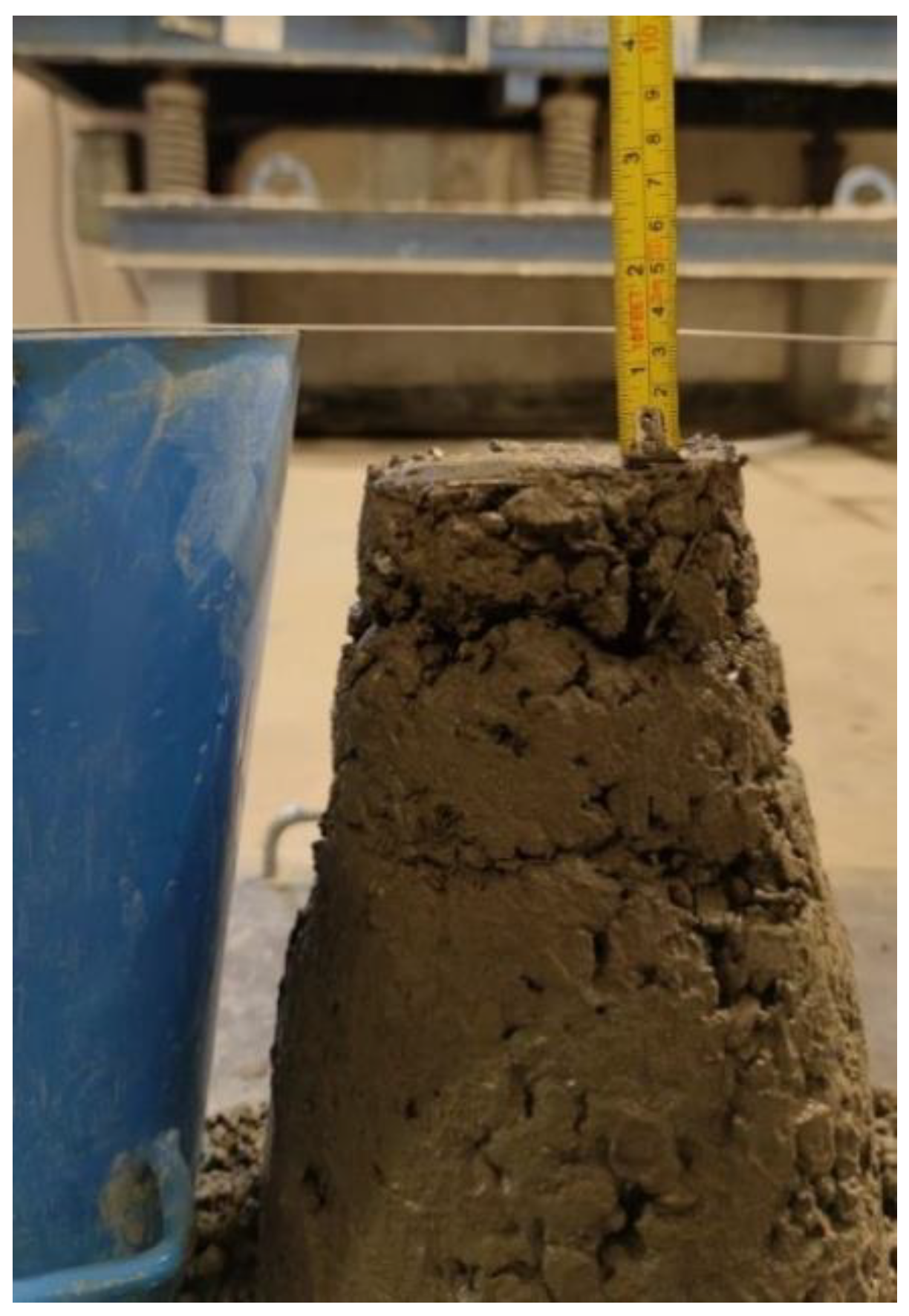
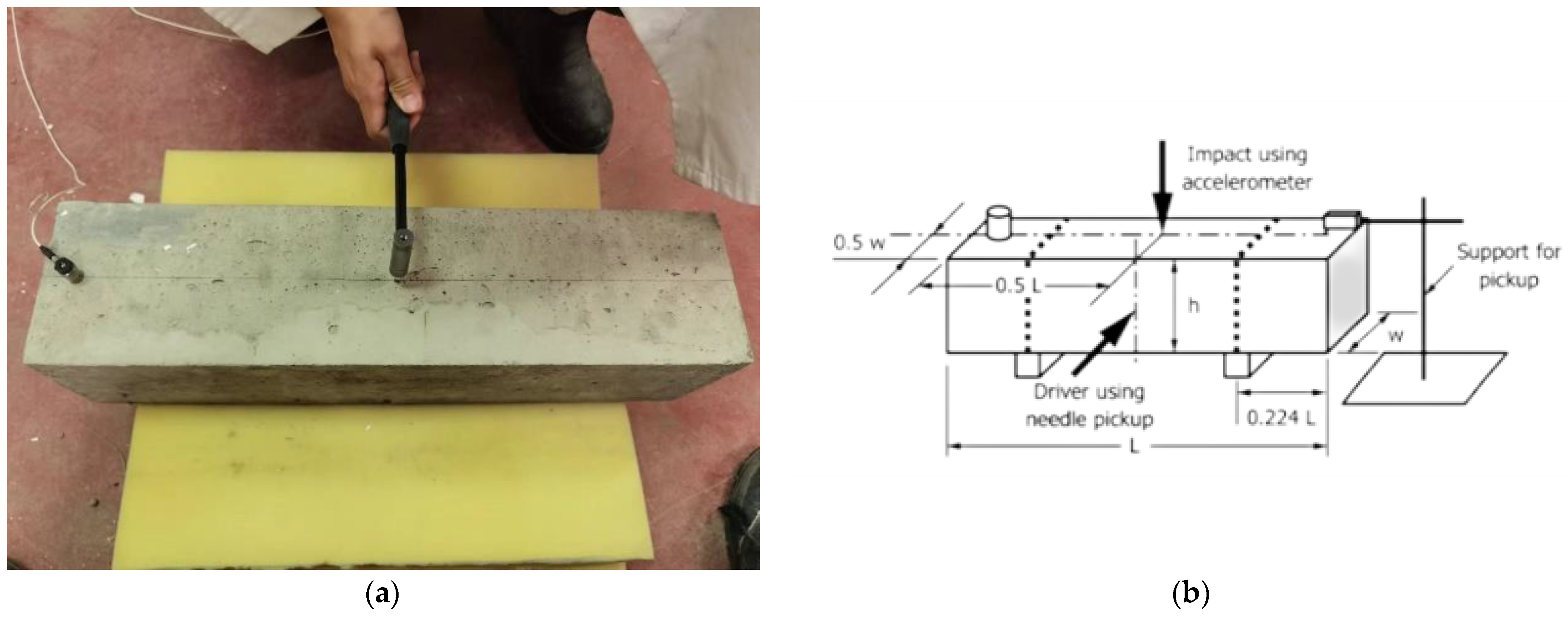

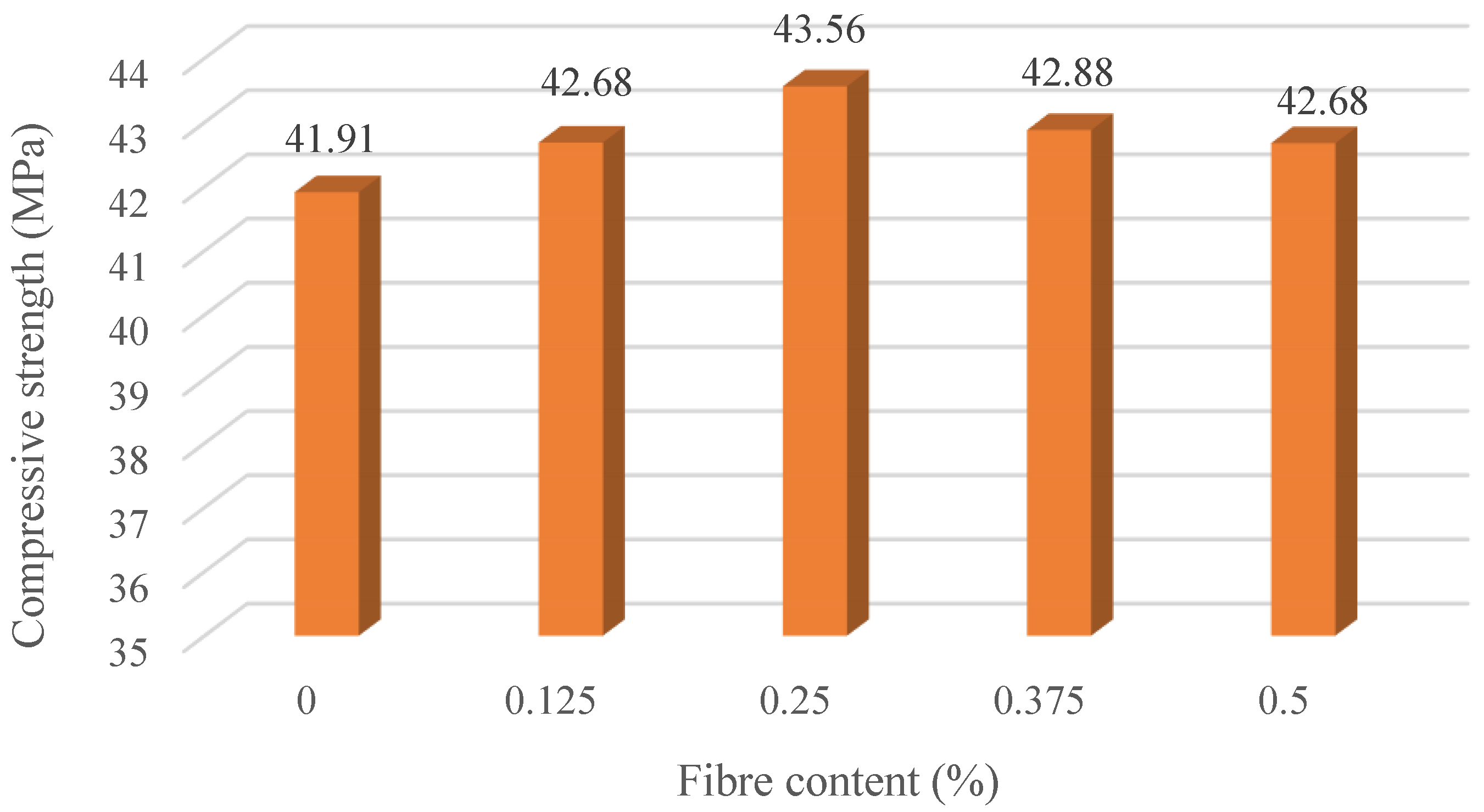


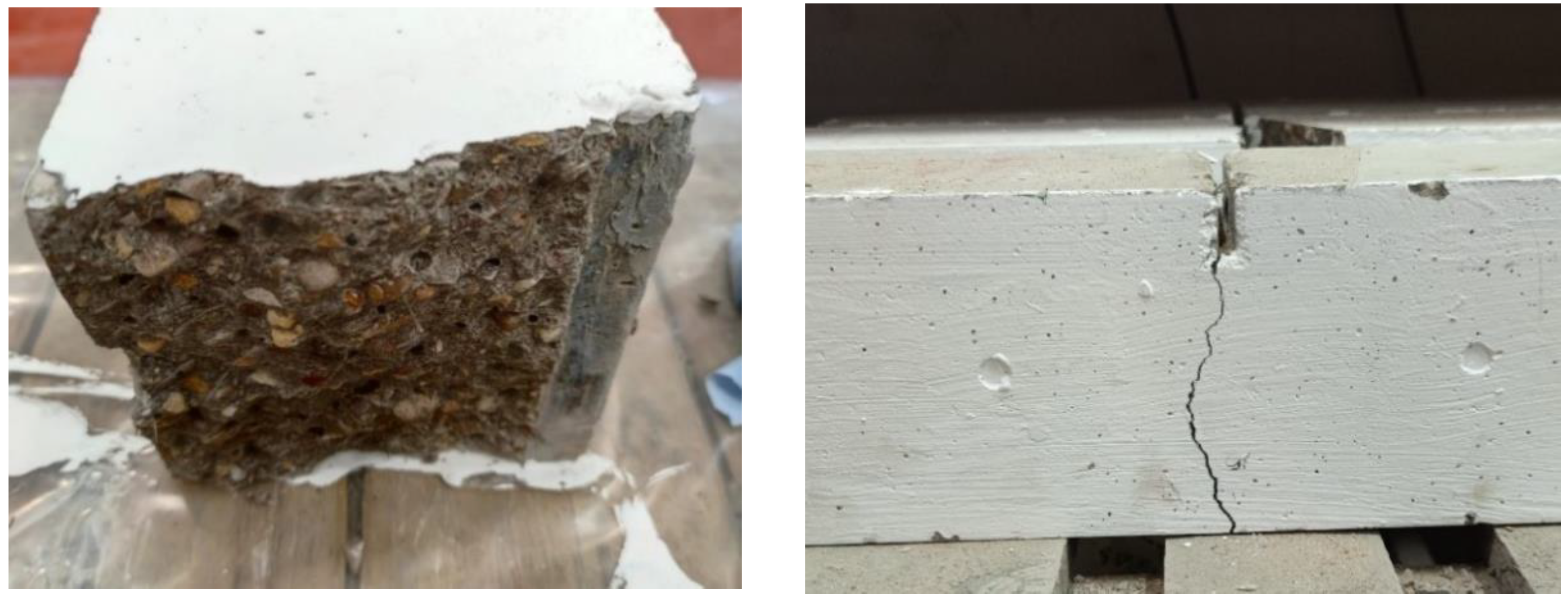

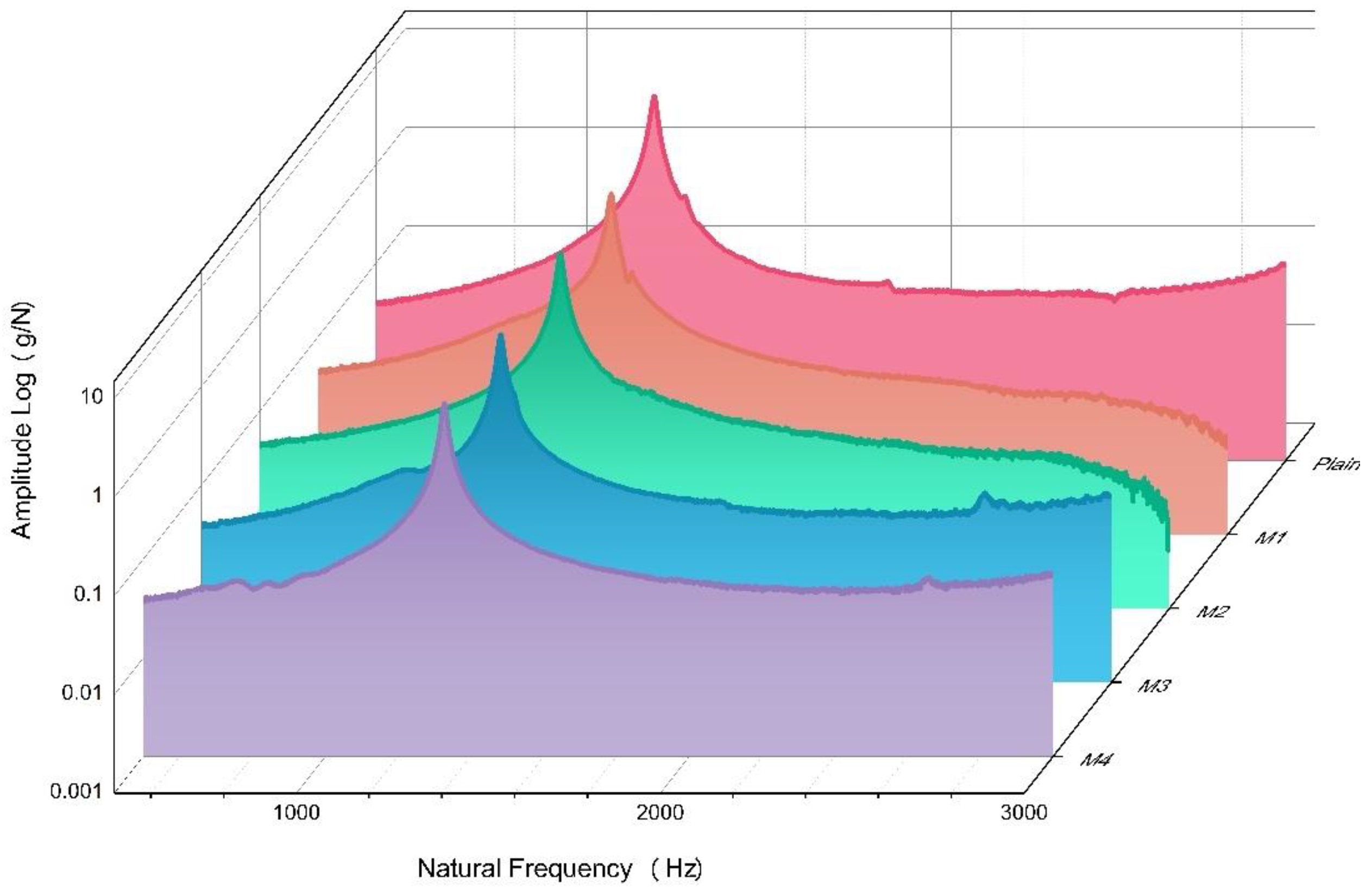
| Scholar | Test Methodology | Flexural Properties | Dosage (%) | Vopt (%) | Increment (%) |
|---|---|---|---|---|---|
| Kabay [3] | Three-Point Bending Test on Notched Beams | Flexural Stress | 0.07, 0.14 | 0.14 | 13 |
| Jiang [19] | Australian Standard, As1012.11-1985 | Strength-Effectiveness and Flexural stress | 0.05, 0.1, 0.3 | 0.3 | 25.51 |
| Jun [46] | Three-Point Bending Test | Flexural Stress | 0.1, 0.15, 0.2, 0.25, 0.3, 0.35 | 0.3 | 12.3 |
| Arslan [25] | Three-Point Bending Test on Notched Beams | Flexural Stress | 0.021, 0.042, 0.084, 0.126 | 0.084 | 25.37 |
| Branston [21] | Astm C1609 | Residual Flexural Stress | 0.15, 0.31, 0.46 | 0.46 | 180 |
| Jalasutram [27] | Astm C1609 | Residual Flexural Stress | 0.5, 0.1, 0.15, 0.2 | 0.2 | 80 |
| Katkhuda [47] | Three-Point Bending Test | Flexural Stress | 0.1, 0.3, 0.5, 1, 1.5 | 1.5 | 74 |
| Zhou [28] | Three-Point Bending Test | Flexural Stress | 0.1, 0.2, 0.3, 0.4, 0.5, 0.6 | 0.3~0.4 | 40 |
| Basalt Type | Short-chopped Filament | Length [mm] | 25 |
| Single Diameter [μ] | 13~17 | Temperature Resistance [°C] | 750 |
| Density [kg/m3] | 2800 | Thermal Conductivity [W/mK] | 0.031 |
| Areal Density [kg/m2] | 1 | Tensile Strength [MPa] | 4840 |
| Width × Run Length [mm] | 1 × 10 | Elastic Modulus (GPa) | 89 |
| Absorption of Humidity (%) | ≤0.1 | Elongation (%) | 3.15 |
| Materials | Cement | Gravel | Sand | Water |
|---|---|---|---|---|
| Weight (kg/m3) | 317.3 | 713.925 | 983.63 | 174.515 |
| Mix | Slump (mm) | Compressive Strength (MPa) 28 Days | ||||||
|---|---|---|---|---|---|---|---|---|
| 1 | 2 | 3 | 4 | 5 | * fc ± SD (MPa) | Increment (%) | ||
| Plain | 43 | 42.02 | 40.25 | 43.08 | 42.06 | 42.06 | 41.91 ± 1.03 | 42.06 |
| 0.125% | 40 | 41.22 | 42.41 | 44.26 | 42.99 | 42.99 | 42.68 ± 1.10 | 42.99 |
| 0.25% | 33 | 41.78 | 44.01 | 43.97 | 43.98 | 43.98 | 43.56 ± 1.10 | 43.98 |
| 0.375% | 26 | 43.17 | 42.21 | 43.56 | 42.51 | 42.51 | 42.88 ± 0.53 | 42.51 |
| 0.5% | 18 | 42.98 | 42.87 | 43.11 | 42.92 | 42.92 | 42.68 ± 0.66 | 42.92 |
| Flexural Strength (MPa) 28 Days | |||||
|---|---|---|---|---|---|
| Mix | Plain | 0.125% | 0.25% | 0.375% | 0.5% |
| Peak Load (kN) | 9.078 | 9.455 | 10.949 | 11.684 | 13.331 |
| Increment (%) | 4.15% | 20.61% | 28.70% | 46.85% | |
| Displacement (mm) | 0.003 | 0.055 | 0.042 | 0.032 | 0.028 |
| fct, L | 3.486 | 3.631 | 4.204 | 4.487 | 5.119 |
| FR, 1 | 0.127 | 0.865 | 0.923 | 0.956 | 1.132 |
| FR, 2 | 0.061 | 0.114 | 0.238 | 0.319 | 0.356 |
| FR, 3 | 0.000 | 0.063 | 0.141 | 0.166 | 0.188 |
| FR, 4 | 0.000 | 0.000 | 0.103 | 0.104 | 0.113 |
| Concrete | Mix | Natural Frequency (Hz) | Damping Ratio | ||||
|---|---|---|---|---|---|---|---|
| Sample Value | Average | SD | Sample Value | Average | SD | ||
| Plain | M0B1 | 1267.2 | 1265.3 | 1.36 | 0.50% | 0.56% | 0.052 |
| M0B2 | 1264.1 | 0.55% | |||||
| M0B3 | 1264.6 | 0.62% | |||||
| 0.125% | M1B1 | 1301.9 | 1298.9 | 2.10 | 0.64% | 0.60% | 0.033 |
| M1B2 | 1297.4 | 0.57% | |||||
| M1B3 | 1297.5 | 0.57% | |||||
| 0.25% | M2B1 | 1347.4 | 1345.6 | 1.34 | 0.60% | 0.60% | 0.003 |
| M2B2 | 1345.2 | 0.59% | |||||
| M2B3 | 1344.2 | 0.60% | |||||
| 0.375% | M3B1 | 1327.9 | 1323.967 | 2.79 | 0.58% | 0.59% | 0.008 |
| M3B2 | 1321.8 | 0.60% | |||||
| M3B3 | 1322.2 | 0.59% | |||||
| 0.5% | M4B1 | 1321.2 | 1322.167 | 0.97 | 0.61% | 0.58% | 0.021 |
| M4B2 | 1321.8 | 0.56% | |||||
| M4B3 | 1323.5 | 0.57% | |||||
| Density of Beams (kg/m3) | Natural Frequency [Hz ± SD] | Damping Ratio [% ± SD] | Dynamic—MOE [GPa ± SD] | |
|---|---|---|---|---|
| Plain | 2277.04 | 1265.3 ± 1.36 | 0.56 ± 0.052 | 27.62 ± 0.06 |
| 0.125% | 2264.44 | 1298.8 ± 2.10 | 0.60 ± 0.033 | 29.06 ± 0.09 |
| 0.25% | 2275.56 | 1345.6 ± 1.34 | 0.60 ± 0.003 | 31.44 ± 0.06 |
| 0.375% | 2282.22 | 1324.0 ± 2.79 | 0.59 ± 0.008 | 30.05 ± 0.13 |
| 0.5% | 2276.30 | 1322.2 ± 0.97 | 0.58 ± 0.0021 | 29.86 ± 0.04 |
Disclaimer/Publisher’s Note: The statements, opinions and data contained in all publications are solely those of the individual author(s) and contributor(s) and not of MDPI and/or the editor(s). MDPI and/or the editor(s) disclaim responsibility for any injury to people or property resulting from any ideas, methods, instructions or products referred to in the content. |
© 2023 by the authors. Licensee MDPI, Basel, Switzerland. This article is an open access article distributed under the terms and conditions of the Creative Commons Attribution (CC BY) license (https://creativecommons.org/licenses/by/4.0/).
Share and Cite
Wu, H.; Qin, X.; Huang, X.; Kaewunruen, S. Engineering, Mechanical and Dynamic Properties of Basalt Fiber Reinforced Concrete. Materials 2023, 16, 623. https://doi.org/10.3390/ma16020623
Wu H, Qin X, Huang X, Kaewunruen S. Engineering, Mechanical and Dynamic Properties of Basalt Fiber Reinforced Concrete. Materials. 2023; 16(2):623. https://doi.org/10.3390/ma16020623
Chicago/Turabian StyleWu, Han, Xia Qin, Xu Huang, and Sakdirat Kaewunruen. 2023. "Engineering, Mechanical and Dynamic Properties of Basalt Fiber Reinforced Concrete" Materials 16, no. 2: 623. https://doi.org/10.3390/ma16020623
APA StyleWu, H., Qin, X., Huang, X., & Kaewunruen, S. (2023). Engineering, Mechanical and Dynamic Properties of Basalt Fiber Reinforced Concrete. Materials, 16(2), 623. https://doi.org/10.3390/ma16020623









